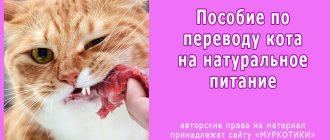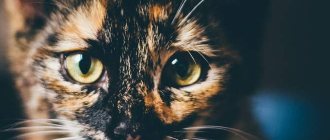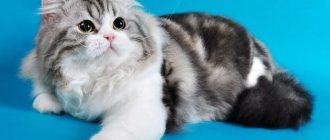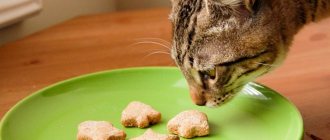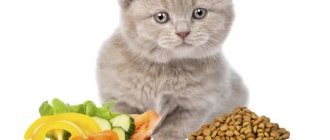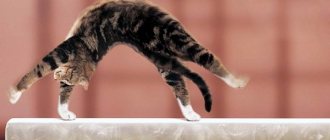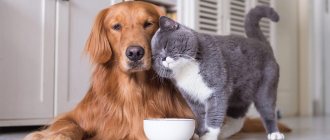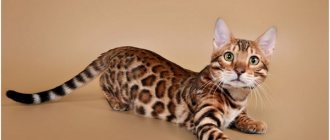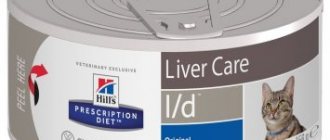Many people are sure that there is nothing difficult about caring for a cat. It is enough to pour food from a bag into her bowl. What could be simpler?
But such owners do not think about the fact that such food can cause harm to the animal. If you already have a cat accustomed to food in your hands, it is absolutely not necessary to poison the fluffy further. With a little persistence and patience, you can wean your cat off food. We will tell you how to do this in today’s article.
Why is it difficult to wean a cat from drying?
This task can indeed be quite difficult. When looking for a way to wean a cat off dry food, many pet owners may encounter surprising stubbornness of the animal. Cat habits are much more stable than human ones, and therefore more difficult to fight. In addition, many people who have never dealt with these furry animals often simply do not know what to feed their domestic cat. What does she like? Can I give her soup, candy or milk?
Another difficulty is that most manufacturers add a variety of flavor enhancers, flavors and food additives to their feed. Cats get so used to this “chemistry” that it is sometimes simply impossible to change their preferences. Compared to store-bought crackers, homemade food seems simply tasteless to them.
If you want to save money and buy cheap food for your animal, get ready to become a regular client of the veterinarian. Budget “drying” contains a record amount of carcinogens, which a priori will not add health to your pet.
Why do cats develop a persistent addiction to freeze-dried food?
Not too scrupulous and conscientious manufacturers, in the struggle for market share, add a lot of specific substances to their products (flavors, taste enhancers and other synthetic additives), which first attract animals (addictive substances), and then cause sustainable addiction (attractants) - a kind of “narcotic” " addiction. This is especially true for the most accessible and cheap cat food of the economy and super economy class (Friskies, Whiskas, Kitiket, etc.). At the same time, other food becomes unattractive and is not perceived as potential food.
Cheap dry food is addictive
Video: the dangers of dry food
Why is it worth weaning your cat off dry food?
If you are ready to think about how to wean your cat off food, then you already understand the disadvantages of canned food:
- Manufacturers add stimulants to the vast majority of feeds. The cat eats a lot, but does not become full.
- With this method of feeding, the animal’s stomach loses its ability to stretch. As a result, it becomes physically difficult for the cat to eat regular food.
- Even the most expensive brands of dry food are very far from ideal. They contain only chemical elements, nothing natural.
- Cat food of more or less passable quality costs a lot of money. If you are trying to feed your animal budget food, get ready to visit the veterinary clinic.
- Prepared cat food most often comes in the form of small pellets, pates, purees, or small pieces. The animal has absolutely no need to load its teeth. It just swallows the food. This is fraught with the appearance of tartar, plaque and other troubles.
- The cat eats the same food. The composition of the granules is almost the same. Only the smell is different, and even then not always. You can easily verify this by opening two or three packs of food with different flavors at the same time and comparing their contents.
If you are still not sure whether cats can eat raw meat, and prefer to make do with granules, study the list of troubles that store-bought “crackers” can cause your pet:
- vitamin deficiency - in the vast majority of dry food, the amount of vitamins stated on the pack does not correspond to the internal contents;
- renal failure - “crackers” are terribly salty, so the kidneys of many animals simply cannot cope with excreting such an amount of salt;
- dysbacteriosis – beneficial bacteria in the animal’s stomach die over time, and diarrhea may occur;
- allergies – if the cat’s food is not suitable, ulcers may appear and hair may fall out;
- poisoning - cheap food contains a lot of dyes that are not at all beneficial for the animal;
- oncology - most dry food contains monosodium glutamate (a very dangerous substance that can cause cancer).
Dangerous consequences of eating ready-made food
No matter how beautifully dry food manufacturers advertise their products, most of them try not to voice the fact that the constant consumption of industrial food by animals leads to disastrous consequences. And among them, veterinarians most often note the following:
- vitamin deficiency (not all feeds contain exactly the vitamins and microelements that are indicated on the packaging);
- dysbacteriosis (for preservation, carcinogens and various chemicals are added that cause indigestion and metabolic disorders);
- urolithiasis (neutered cats are especially susceptible to this disease, although cats are not immune from kidney disease);
- allergic reactions (since the basis of dry food is legumes, animals experience flatulence and bloating; due to the dyes included in the composition, problems with hair and skin can occur - itching, sores, baldness).
What should be included in the diet?
For your pet to live a long and healthy life, it needs to be fed properly. What do cats like to eat and what should be included in their weekly diet?
Try to regularly give your cat the following foods:
- Raw lean meat. Chicken, rabbit, turkey or beef are great.
- Fish. It also should not be greasy and must undergo heat treatment.
- Egg yolk. One piece per week is enough.
- A variety of dairy products. Here, too, you need to remember about fat content.
- Broths and soups. Diversity is allowed here. The main thing is that the pet likes it.
- Boiled liver and offal.
- Raw and stewed vegetables. It all depends on the individual preferences of the animal. Some people like melon, others like cucumbers.
- Cereals in the form of porridges and casseroles.
Many less experienced owners are interested in whether cats can have cheese? On the one hand, it seems to be a dairy product, but on the other, it is quite fatty and can cause harm to the animal. The answer in this case is quite simple. If you occasionally pamper your pet with a small piece, nothing bad will happen. But you shouldn't feed your cat cheese regularly.
Another, no less popular question: can cats fish? It is possible, but only in processed form. A large number of heavy metals, helminths and other parasites that can be found in raw fish can cause irreparable harm to your pet.
How to teach a kitten to eat on its own?
To learn to feed from a bowl, it is important: the kitten lives with or without its mother.
If the baby is with his mother, then she can teach him everything that is useful in life: to eat, meet the enemy, escape from bad weather. When a cat teaches her baby to eat, she demonstrates to him how she puts her muzzle in a bowl and makes grasping movements, crushes food, and swallows it. A cat often invites its child to eat with its appearance and purring sounds.
The kitten's brain is a sponge, absorbing information from its mother. He is able to repeat everything his teacher shows.
But in practice this is not always the case; many feline maternal responsibilities are taken on by the pet owner.
If you had to do the training, then know that the baby is ready not only to adopt the owner’s eating style, but may also show a desire to brush his teeth like you, or go to the toilet on the toilet. Start learning to feed yourself by personal example.
Show your kitten that you are eating from a bowl on the floor, and he will copy you. If not, then help him: take the bowl and place it on your lap. Create a cozy environment for your baby. After all, cats are sensitive to spiritual warmth.
Spread food on your pacifier or finger. Then the baby will remember how he ate his mother’s milk and will lick the food.
How to accustom a cat to natural products?
If you don't know how to wean your cat off food, take a look at one of the two options below.
Method No. 1
The cat needs to be fed 3-4 times a day. Therefore, try to alternate “crackers” with regular food. Give the usual food in the first half of the day. At this time of day, digestion is just “waking up”. To reduce the saltiness of dry food, fill the portion with plenty of water. When the “crackers” are soaked, drain the liquid and give the wet lumps to the cat.
Make sure your pet always has a sufficient amount of clean water.
Offer your animal natural food for lunch and dinner. Do not give in to the indignant cries of your pet demanding canned food. If the cat has not eaten, remove the bowl after 20–25 minutes until the next feeding.
Method No. 2
This option involves mixing canned food with regular food. On the first day, soak the crackers, drain off excess water and dilute with homemade food. The proportion is approximately this: 5 parts canned food, 1 part natural food. Repeat the procedure for lunch and dinner. Feed the animal this way for 3 to 5 days.
After this, start diluting the feed in a ratio of 4:2, and after a week switch to the 3:3 option. Every week, reduce the portion of dry food by 1 part, and gradually increase the portion of homemade food.
How to switch a cat to another food
It may seem that the simplest situation is when the owners do not change the type of food (dry, wet), but simply decided for certain reasons to change the brand. This is a misconception; transferring an animal from one brand to another also requires time and patience of the owners.
Reasons for transferring to another brand:
- transition of a kitten to an adult age group;
- medical indications (therapeutic and prophylactic brands);
- pregnancy;
- sterilization, castration;
- recovery in the postoperative period;
- identifying intolerance to certain foods;
- advanced age;
- allergy;
- transfer to a premium brand (super-premium, holistic);
- The brand of food that the cat is accustomed to has been discontinued.
New cat food is introduced into the menu gradually over 10-12 days. In the first 1-2 days, offer the animal only 20% of the new brand of food. The rest of the serving should be the pet’s usual food. Increase the amount of new food in the diet by 10% every day until you reach 100%.
Throughout the transition period, carefully monitor the condition of the animal. If you notice allergic reactions, signs of gastrointestinal upset, changes in behavior, stop giving new food and show the animal to a veterinarian.
How to wean a cat off whiskey and other economy-class food
This can be difficult. Manufacturers of economy-class food add artificial flavors, dyes and taste enhancers. Therefore, many cats quickly get used to such food and are very fond of cheap food from supermarkets.
However, such food can be harmful to your pet's health. The composition of these brands is not sufficiently balanced; these foods contain little protein but a lot of carbohydrates. Economy brands, such as Whiskas, Kiteket, Friskies, have low energy value; cats need to eat large portions to get enough.
Owners will need time and patience to change their pet's taste preferences. This cannot be achieved in one day. You need to tune in little by little and gradually add new food of better quality to the diet. The cat may ignore it, choose an old brand of granules, or leave new food of an unusual taste in the bowl.
You need to patiently offer your cat food of a new brand, calmly and restrainedly treat its whims and pitiful meows. When the animal understands that there will be no other food, it will have to eat what is given. The owner’s task is to calmly react to possible failures and praise the pet if he has at least tried a new taste.
Video
Some tips
If you have found a suitable way to wean your cat off dry food, follow through to the end. Do not succumb to cat provocations and expressive “hungry” looks. Act confidently and persistently. Stick to your plan.
If an animal has declared a boycott, do not starve it for weeks. It may be dangerous. Try to arouse interest in homemade food by treating them to some kind of delicacy. Offer a little different food: a piece of meat, sausage, a slice of bread, a slice of cucumber, a slice of potato. A hungry animal will definitely be interested in something.
Reasons for switching to fresh food
In some cases, the animal must be weaned off dry food.
- Eating economy class brands (Whiskas, Friskies, Felix) is harmful: they contain ballast substances that reduce the cost of production, but are useless and cause allergies.
- Good ready-made pellets are expensive and cost a lot, especially if you have several pets.
- It happens that a cat needs a strict diet: for some disorders, even veterinary food cannot help. Sometimes pancreatitis requires a diet that contains almost no fat. Industrial food will not meet this requirement because it is not normal for an animal that is not in a critical situation.
If you decide to switch your cat to high-quality dry food, you need to choose from the super-premium or holistic segment - they consist only of healthy ingredients (mostly natural meat) and do not contain bone meal, corn starch and other unnecessary additives.
What not to do
Have you already chosen a way to wean your cat off food? Then remember a few rules:
- Take your time. Sometimes it can take months to relearn. A drastic change in the usual diet will discord your relationship, lead to a boycott and changes in the animal’s well-being.
- Don't spoil your pet. Of course, sometimes it’s not only possible, but also necessary to treat you to something tasty. But you should not “put” food into the animal’s mouth. You're not going to indulge all his whims for the rest of your life, are you? This is not the way to start. The attitude towards the animal should remain equal and friendly, as always.
Gentle introduction to new food
The best way to accustom your cat to natural food is to begin gradually replacing dry food with it, mixing them. A complete replacement will take 10–14 days. There is no need to rush - a sudden switch to food of a different composition and consistency can cause stomach upset.
It must be remembered that unsystematic eating of different foods leads to metabolic disorders - for example, to hypervitaminosis. Changing the diet is one of the few situations in a cat's life when mixing is acceptable.
Important points
In the process of retraining an animal, it is important to be persistent and consistent. If you do not live alone, agree with all household members to act rationally. Keep an especially close eye on children. Protecting their furry pet from the “monster and tyrant”, they can feed him the usual and favorite crackers. Such “concern” will negate all efforts and fruitful work on retraining.
Explain to your children that you are doing this not because you don’t love Barsik or Murka. But because you don’t want the fluffy to get sick. Ask for help and assign your child to make sure there is always plenty of fresh water near the pussy. More often than not, this tactic works flawlessly.
What should cats eat?
We have already told you what can be included in the diet of an adult animal. Now let's talk about proportions. Proper nutrition that provides the cat with all the necessary elements should look something like this:
- 45% – meat and other protein foods (dairy products, eggs, sometimes fish);
- 20% – offal (offal, lungs, liver, heart);
- 20% – vegetables, cereals, various sources of fiber and microelements;
- 5% – vitamin complexes, oil, bone meal.
Basic principles of eating natural foods
When changing your diet, you should know that natural food is not the food that a person prepares for himself, but specially prepared dishes for cats from approved products, without salt and spices. A balanced diet is important for normal well-being, health, and the proper development of all systems of the animal’s body. Eating well is about more than just making the right food choices. The responsible owner must also adhere to the recommendations for organizing the feeding regime. Very young kittens should be fed frequently - up to 5 times a day, from four to five months - 3-4 times, after six months - 3 times, and from a year - 2 times a day. In order to prevent vitamin deficiency, experts advise enriching pets' diet with vitamin and mineral supplements, such as Canina Canivita, Gimpet, BEAPHAR KITTY'S TAURINE + BIOTIN, Doctor ZOO.
The volume of the daily portion should be calculated based on the following standards: per kilogram of weight of an active healthy animal there should be at least 10 grams of protein, 2 grams of fat and carbohydrates. The sufficient energy value of an animal's diet during the growth period is 200 kcal, and 80 kcal is enough for an adult cat.
Whatever the feeding regimen, the pet should have free access to a bowl of water. It should always be fresh, for this it must be changed 2 times a day.
Table: which foods can be included in a cat’s diet and which cannot
| Allowed | Prohibited |
| Beef, lean poultry meat - chicken, turkey | Fatty meat - pork, duck, goose |
| Boiled by-products 1–2 times a week | Cow's milk |
| Fish, only marine varieties, boiled - 1-2 times a week | River fish |
| Cottage cheese, kefir | Any flour products, sweets |
| Yolk | Potatoes, legumes |
| Vegetables, except those on the prohibited list | Mushrooms |
| Cereals | Onion garlic |
| Oil - regular vegetable or flaxseed | Spices |
| Any canned, pickled and sausage products |
A cat's natural diet is not food from the human table
More than half of the daily amount of food - 60–70% - should come from meat (it can be boiled or raw) and dairy products. You can give the yolk once every 7 days, and boiled fish with the same frequency. Cereals should be well boiled, all food should be given to the pet warm. Oil should be added to the main dish 2-3 times a week - half a teaspoon. The only acceptable way to process food for a cat is cooking.
